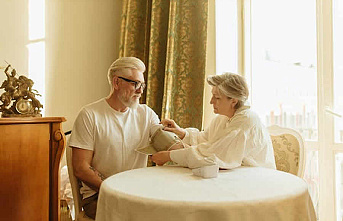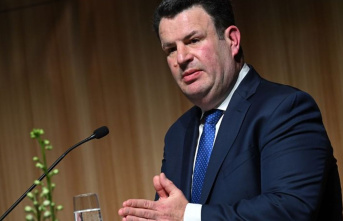Carla is five years old and a tiny device in the heart that takes you there, from weighing less than a kilo. One of the many drawbacks of being born premature is that it remains open a cavity between the heart and the lungs that closes alone with your own breathing in the rest of the babies. If that does not resolve with fluid restriction and diuretics, as a first option; or with ibuprofen, as a second, the third pathway has traditionally been an open heart surgery. Until a few years ago, when in the Gregorio Marañón hospital in Madrid came up with a solution whose regular use have been approved this year by the medicines agencies of the united States and Europe.
Carla was the 13th baby of the hospital to which she was implanted with this little thing that plugs that gap: the ductus. Dr. Jose Luis Zunzunegui, head of the Unit of Hemodynamics and the Children's center, met their parents and explain to them that there was an experimental method that did not require surgery: “You enter a pathway in the femur that touches the heart. Out there gets the device, which is released in the precise place, it is opened and plugged the hole”.
MORE INFORMATION
Preterm, a challenge very controlled A nurse creates an elastic band that facilitates the skin to skin contact and helps thousands of premature babiesRaquel Prudencio, mother of Face who is a nurse of the same hospital, don't hesitate. “I didn't know very well what I was talking about, but a pathway will always be better than an operation.” And Jose Maria Huertes, the father, accepted without question the opinion of the experts. “We were going to go take coffee to wait the procedure. When we were leaving, the team doctor came to speak with us. I immediately thought that they had gotten, who came to tell us that they had failed. But it was already done, I don't think it took or 10 minutes,” says Prudencio as he looks to play his daughter's perfectly healthy, only with the delay of maturation of a baby that was born after five months of gestation, and with only 450 grams of weight; so that without the work of a pointer team of neonatologists would have ended in an abortion.
To avoid the open heart surgery, at the Gregorio Marañón, parallel to a canadian hospital and another colombian (it is not very clear which one was the father of the idea, since each one did their own), they came up with this solution: use a tiny device that had been used for similar procedures in older babies. Little by little they saw that the piccolo, the trade name of the "thing" of the house Abbott, was a solution much less invasive to solve the problem in babies of more than 800 grams of weight, and up to two kilos.
As you were using were also that the recovery of premature babies and the time that had to pass intubated was less than those who submitted to the operation, according to a study published by dr. Alejandro Rodríguez Hogando. Zunzunegui ensures that with this technique in 24 or 48 hours normalizes the lung function, something that with surgery takes between one and two weeks.
The learning of these virtues is slow, because the number of cases treated is small. In the whole of Europe, are born each year 3,000 babies with this problem, and in most cases is achieved by solving the first two lines of treatment: fluid restriction and diuretics, and three shots of ibuprofen, which has a metabolic function that helps close the ductus. Only between 15% and 20% of those born in the Gregorio Marañón with this problem is to resort to surgery or, by default, to this technique. So, since 2011, only have applied it to a little more than half a hundred babies. Among the latter, most not even born at the Gregorio Marañon, but were referred by other hospitals to avoid the surgery.
The technique is going to expand around the world. Several hospitals make it and have accumulated more cases than the own Gregorio Marañón, “since they have many more births,” said Zunzunegui. The problem is that to export the technique is not simple. “This is a team work. From nurses, neonatologists, and the intensivist must learn how to do it, to work together to do well, so don't just buy the device to apply it".
In Spain there are three hospitals that already use it: the Virgin of the Rocío in Seville and the Peace and the Gregorio Marañon, both in Madrid. Now that the European medicines Agency has included in its protocols, since it can be applied routinely. It is not ecesario to explain that it is an experimental protocol, with the reluctance that this can generate, despite the few doubts that were raised to the parents of Carla.
Date Of Update: 31 December 2019, 04:00









